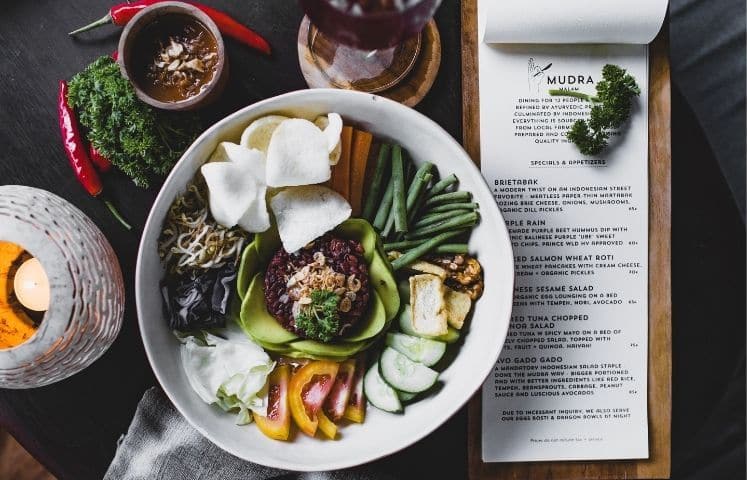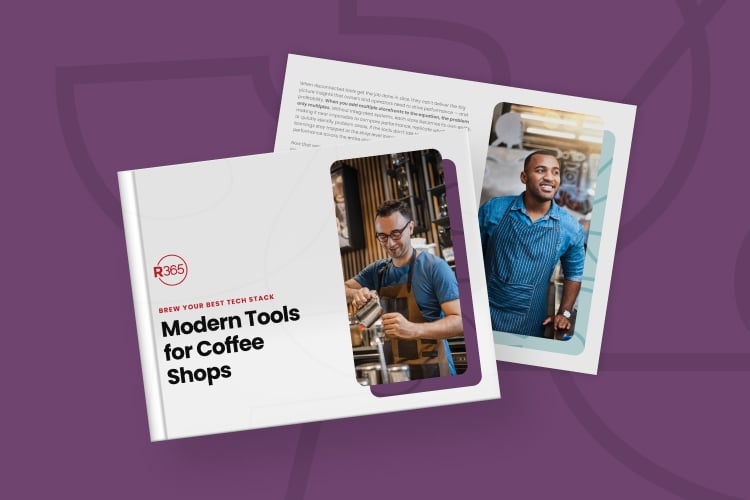Rising ingredient prices, labor factors like higher wages and benefits, and a lingering shortage of individuals to fill open positions have put restaurant operators under incredible pressure.
Despite so much being uncontrollable, there’s still a lot that owners and operators can do to boost margins and profits to provide guests with better experiences in the hands of better-trained staff. Chief among them is menu engineering. Below, you’ll find an overview of our recent webinar, Money-Makers Menu Engineering Tips & Tricks For 2023, which provides an overview of menu engineering, how you can leverage technology to make it an integral part of your ongoing operations, and how to analyze, design, and assess your menu’s composition and composition profitability.
It’s all about Contribution Margin
Alongside key metrics like Cost of Goods Sold (CoGS) and food cost percentage, contribution margin, which is what percentage of profit each dish contributes, is among the most important data points for overall restaurant operations and menu engineering. First, take the menu item price. Then, take menu item cost, which is the cost of all your ingredients that make up that menu item. The difference is your contribution margin or your profits for that menu item.
Once you know which menu items pull the best profits and profit percentage, you can use a sales mix report to see which menu items are popular and pull a nice profit. This allows you to categorize menu items as stars (high sales, high profit), opportunities (high sales, lower profit), puzzles (low sales, high profit), or dogs (low sales, low profit).
Your stars are best sellers and moneymakers and should only be monitored for continued success. For other categories, you can do things like rework portion sizes to bring up the profitability of opportunities or hold a competition among your servers to see who can sell the most puzzles and potentially turn them into stars. You can sometimes remove dogs from your menus, but they can include must-have dishes for children or special diets. Consider placing them on a separate menu.
Dig into the details
The first step to analyzing your menu’s performance and how to potentially improve it is first to ensure you have all the data surrounding it. This includes vendor pricing and item details, inventory data, and sales data. Ideally, all data should be centralized in an end-to-end Restaurant Enterprise Management platform that seamlessly integrates with hundreds of industry partners. That same system should also allow for sophisticated, automated reporting to provide accurate insights on an ongoing basis so operators can see and understand how their menus are performing and what changes to make.
Two key reports you’ll want are the menu item analysis report and the item price change analysis report.
Menu Item Analysis
This report includes the menu item, which should come from your POS integration, price, and cost. Remember, the difference between those two is your contribution margin. After that, this report should include your food cost percentage, the number of plates sold for your selected time period, the percentage of sales that item accounted for, and the theoretical cost of those sales, which, if your system includes a robust recipe infrastructure, will tell you how much it costs to generate all of those sales for that dish. All of this information is critical to identifying your stars, opportunities, puzzles, and dogs.
Item Price Change Analysis
This report can only be accessed if your system and vendors are integrated to reflect accurate, up-to-date pricing information. With it, you can identify how various prices for proteins, dairy, produce, and more change on a delivery-by-delivery basis and if a vendor delivers a substitution. Operators should pay careful attention to both the quality and prices of substitutions. While lower-quality substitutions should be dealt with quickly, those of the same quality, potentially at a lower price, could represent an opportunity to increase a dish’s profitability.
Rethink prep
With inflation rising to unprecedented levels, operators are rethinking every aspect of their restaurants’ operations. While price increases like the 16% jump in beef and 11% pop in eggs have been widely discussed, increases in other areas also challenge operators to get creative or back to basics.
The wholesale cost of prepared food has risen 14%, said former chef and R365 Customer Success Manager David Mortensen. As a chef, he would buy precut vegetables to speed up prep work on things like mirepoix, a common base of onion, celery, and carrots. With prices on the rise, however, those time savers have an outsized impact on food costs. “It didn’t cost too much more than the whole or original product,” he said. “Nowadays, though, I would second guess that and tell my cooks, “Hey, it’s time to get back to basics, dicing up those onions, celery, carrots, and everything else, right?
Be careful when changing prices
While many restaurants have or are examining raising prices, caution is paramount. “Operators have increased their prices at historically aggressive rates over the past year when price increases went beyond a 10 to 13% increase, studies have shown a severe decline in traffic, which completely negates the increase altogether,” Mortensen said. “It’s very important to understand what is too much, and it seems that anything over 5% seems to negate the price increase altogether. Four to eight percent appears to be the sweet spot depending on the restaurant category. Often, customers of budget-friendly or low-cost restaurants will be the most sensitive to increases on the higher side of that bracket.
Remember the Golden Triangle
When designing a menu, it’s important to know how people’s eyes and minds work. In looking at menus, websites, and other printed media, humans generally follow a pattern that allows them to quickly create an overall impression of whatever they look at. First, the focus always goes to the center. From there, it bounces up to the top right corner, then to the bottom right corner, and moves diagonally across the page to get an overall gist of the menu. This creates the so-called “Golden Triangle, “your menu’s most valuable real estate. This is where you should place your stars, opportunities, and other dishes that contribute significantly to your profit.
Use decoys
You can also try our decoys within or near the Golden Triangle. This is a highlight, such as a box or white space, around a higher-priced item next to a lower-priced item with a higher contribution margin. Imagine a $34 filet mignon boxed alongside a $24 bavette steak. While the filet boasts a higher price, the bavette’s contribution margin is far higher due to the lower wholesale cost. By placing it next to a high-priced item, which diners often avoid or feel bad about ordering, you guide the guest toward the dish that will most benefit your bottom line.
Use the right colors
When designing menus and restaurant logos, colors can affect guests’ and potential guests’ emotional and even subconscious responses. Below, find a quick rundown of how people respond to various colors:
Red: Encourages action
Yellow: Vibrant and happy
Orange: Stimulates appetite and impulsive ordering
Pink: Sweet, romantic, can be seen as unnatural and unhealthy
Blue: Calming and dulling. It’s recommended to avoid blue for anything but a seafood concept
Purple: Royal, creative, lavish
Green. Healthy and fresh
Black: Exclusive and elegant
Price right
As times change, so do restaurant trends, operations, and menus. One of the most significant and successful changes in menu design is how they deal with money. Previously, owners would list menu prices in a column along the righthand side of each page. Avoid this. It encourages diners to choose by price rather than preference. With column pricing should go the 99 cents often tagged onto prices, as well as the dollar sign, which makes guests consider price more seriously and push their desires to the side.
Optimize for online
All of the above guidance works for online menus. And because they’re becoming increasingly important with each passing day, it’s also critical to consider how guests find you online. To stand out online, you need great digital marketing, and you need to understand search engine optimization. How can your restaurant boost its online presence? First, optimize local listings and triple-check them for accuracy. Use an SEO tool like Moz.com to see and ensure all of your listings are correct and to begin understanding how to get found by hungry diners. Encourage online reviews: Yelp, OpenTable, and Google are all similar to online listings. Create or claim the listings for your profile. Ensure they have pictures, links for online reservations, your website, and your phone number. All those things need to be on every single review site. Master social media marketing post specials like exclusively on your social channel here and there. Try to make it a bit exclusive so that people follow your restaurant and engage with your brand. The key is to invest in and create a digital storefront just as you do with your brick-and-mortar location. With more and more ordering and dining taking place in digital spaces, you need to be sure that your culture is reflected in every way a guest might interact with you.



